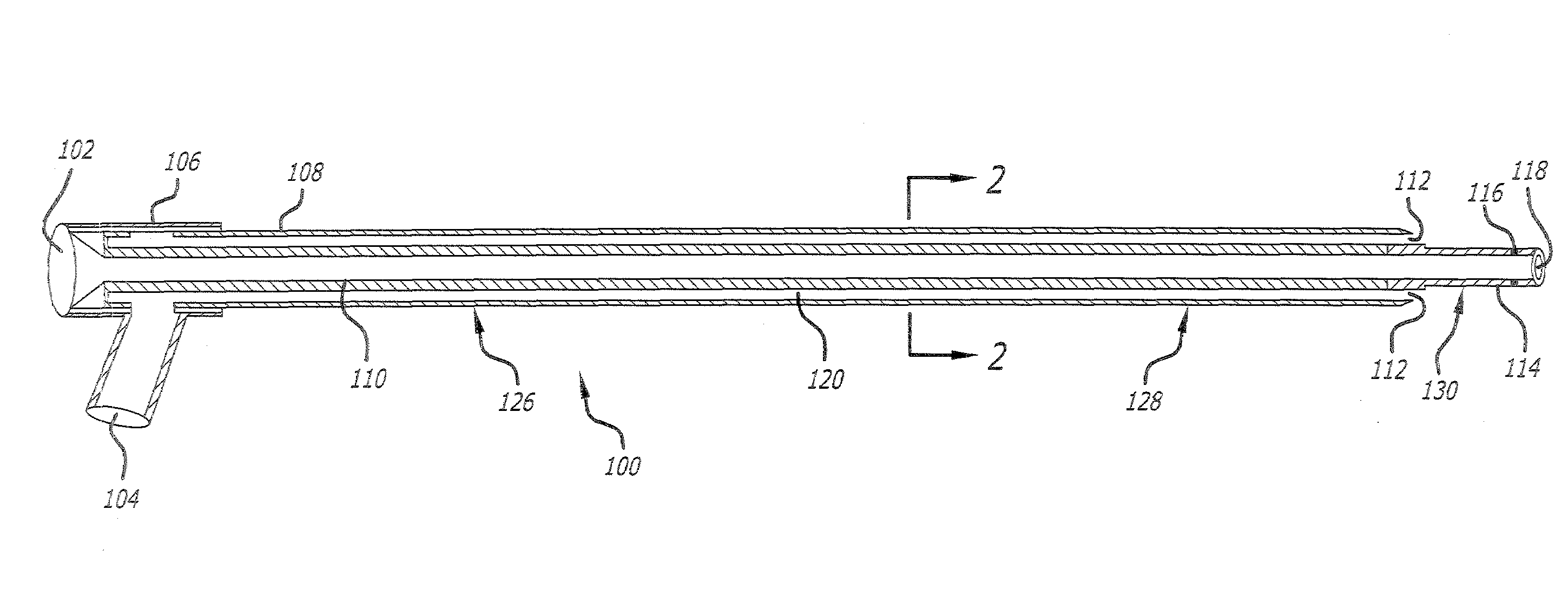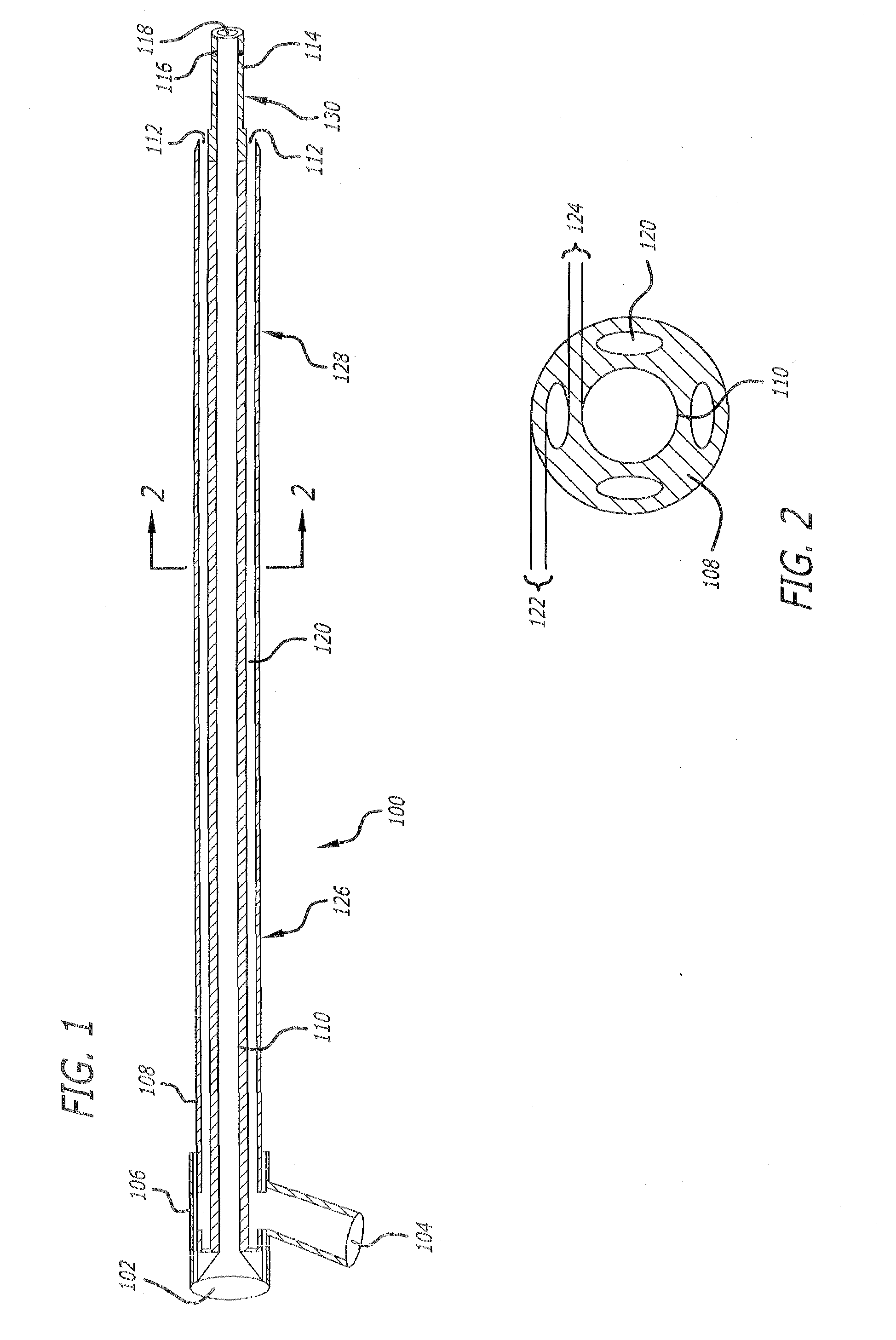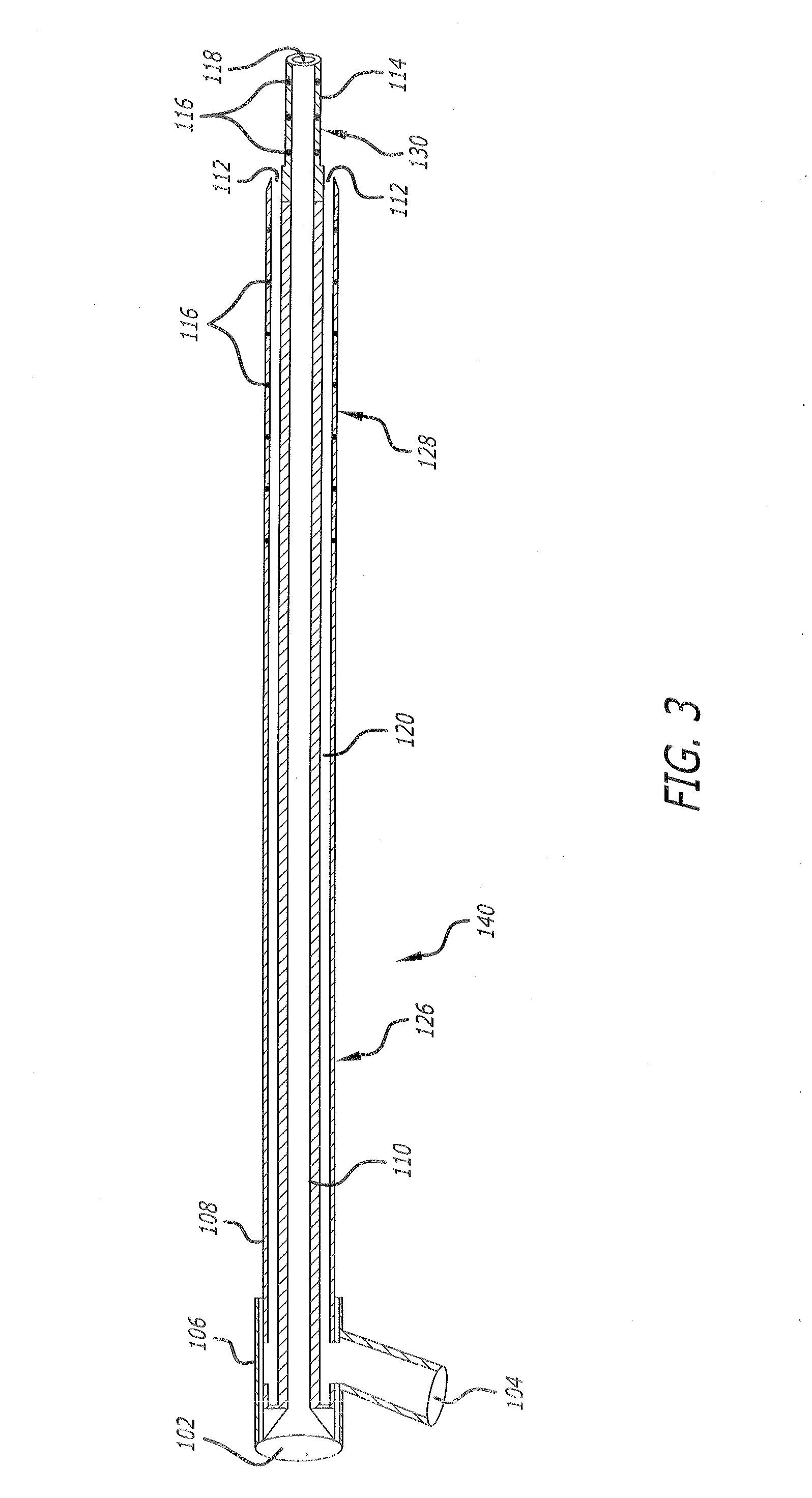Diagnostic catheter
a diagnostic catheter and catheter technology, applied in the field of medical devices, can solve the problems of reducing the probability increasing the risk of complication to the patient, and reducing the target size, so as to improve contrast visualization, reduce the likelihood of causing trauma to the patient, and maintain structural integrity and kink resistance.
- Summary
- Abstract
- Description
- Claims
- Application Information
AI Technical Summary
Benefits of technology
Problems solved by technology
Method used
Image
Examples
Embodiment Construction
[0029]FIGS. 1 and 2 illustrate a preferred embodiment of a diagnostic catheter 100 according to the present invention. The diagnostic catheter 100 includes both a guidewire lumen 110 and four contrast lumens 120 which allow the user to deliver contrast to a target location within a patient without removing the guidewire.
[0030]The catheter 100 has a generally elongated body 108 that includes regions 126, 128 and 130. Preferably, each region 126, 128 and 130 is progressively more flexible than the next, allowing regions 128 and 130 to better conform to the tortuous pathway of the patient's vascular system while minimizing any trauma cause by the distal end of the catheter 100. This feature is advantageous as compared with prior art measurement catheters which are more rigid and therefore may reshape the anatomy when advanced through the vascular system of a patient.
[0031]In one example, the region 126 is about 70 cm in length and composed of a high density polyethylene with a Duromete...
PUM
| Property | Measurement | Unit |
|---|---|---|
| length | aaaaa | aaaaa |
| length | aaaaa | aaaaa |
| inner diameter | aaaaa | aaaaa |
Abstract
Description
Claims
Application Information
 Login to View More
Login to View More - R&D
- Intellectual Property
- Life Sciences
- Materials
- Tech Scout
- Unparalleled Data Quality
- Higher Quality Content
- 60% Fewer Hallucinations
Browse by: Latest US Patents, China's latest patents, Technical Efficacy Thesaurus, Application Domain, Technology Topic, Popular Technical Reports.
© 2025 PatSnap. All rights reserved.Legal|Privacy policy|Modern Slavery Act Transparency Statement|Sitemap|About US| Contact US: help@patsnap.com



